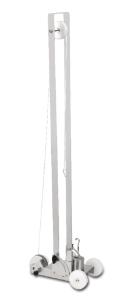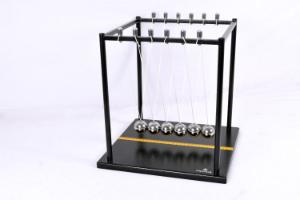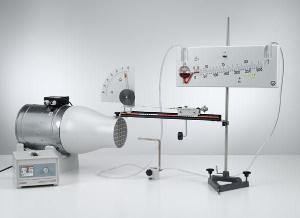Newton's Laws of Motion; Plus a free handout from AccessScience
Access to this content is available to Ward’s World readers for free from McGraw Hill’s AccessScience, an award-winning, digital STEM resource that provides immediate, authoritative answers to students’ thirst for scientific knowledge on topics such as climate change, virology, pollution, and more. Ward’s World and McGraw Hill have partnered to offer educators a no-obligation, free trial subscription to this product. Request your free trial today and discover how valuable AccessScience can be for you and your students.
High School
Newton's laws of motion introduce students to force and its effect on motion. These laws are the foundation of classical mechanics, one of the main branches of physics. Your class can experience that “Aha!” moment as they learn how Newton’s laws tie into almost everything we see in everyday life.
Newton's laws of motion comprise three fundamental principles that form the basis of classical mechanics.
- The first law of motion states that a body not acted on by a force moves with constant velocity.
- The second law of motion states that the acceleration of a body is proportional to the force acting on it and inversely proportional to its mass.
- The third law of motion states that two bodies exert forces on one another that are equal in magnitude but opposite in direction.
As students dig deeper into how the laws of motion apply to real-life problems, they’ll need to know all the influences involved, like gravity, friction, and tension. We’ve pulled together a few facts to help get you started:
Gravity – Students can gain a lot by understanding this weighty subject. There are four fundamental forces in the universe: the strong nuclear force, the weak nuclear force, the electromagnetic force, and the gravitational force. They work over different ranges and have different strengths. Gravity is the weakest, but it has an infinite range (that gets weaker with distance). In physics, gravity is a fundamental interaction that causes mutual attraction between all things with mass or energy. Gravity is the force that pulls all the masses in the universe together. While Newton predicted the existence of gravitational force, Einstein explained how it worked! E=MC2, it’s about time your students learn its significance!
Friction – Learning this physics concept doesn’t have to be a drag if we keep it simple. Friction is a force that happens when solid surfaces rub against each other (with opposing motion). Friction can slow things down—like a brake pedal pressing against moving wheels. Different objects have different amounts of friction when they rub together. Rough surfaces or heavy objects have more friction between them than smooth surfaces or light objects. When surfaces do not rub against each other, there is no friction between them.
Tension - The pulling force transmitted axially by a string, rope, chain, or similar object or by each end of a rod, truss member, or similar three-dimensional object. The tension force is directed over the length of the wire and pulls energy equally on the bodies at the ends. Tension is the opposite of “slack,” which is caused by pushing an object instead of pulling it.
After completing your coursework on Newtons law’s of motion, students can impress their friends by explaining how these laws affect how things work, like airbags and clothes dryers. And affect how things move, like cars, rocket ships, flowing water, and spinning balls.
Let the four forces be with you!
Download McGraw Hill’s AccessScience article, Newton’s Laws of Motion, to develop your lesson plans that help students understand the three fundamental principles that form the basis of classical mechanics. The free download also includes assessment questions and answers you can use to test student understanding.
Recommended Products
[StartProductBlock]

FUNdamentals of Physics: Newton Cart
A gravity-powered metal car to demonstrate the various principles of mechanics, including Newton's Laws of motion, energy and energy conversion, momentum, impulse, and work.
[EndProductBlock]
[StartProductBlock]

CENCO® Newton Cradle
A unique apparatus to demonstrate elastic collisions better than any other device because of its sheer size and the complete absence of friction.
[EndProductBlock]
[StartProductBlock]

Aerodynamics - Air Resistance, Drag Coefficient, and Pressure Curve
Examine the relationship between the air resistance and the flow speed with a circular disk. Measure flow speed with a pressure head sensor and the air resistance with a dynamometer.
[EndProductBlock]
